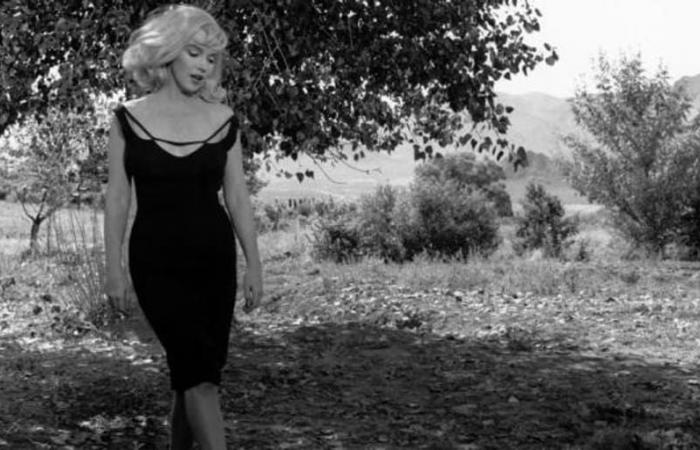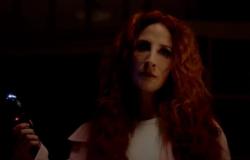«If photography is not art, so much the worse for art». These are the words of the Italian photographer Ferdinando Scianna, member of Magnum. This Dream Factorywhich can boast as many stars per square meter as Hollywood, has countless stories locked in its … files. Among the most iconic images, two of Robert Capa, one of its founders.
On the one hand, the dead militiaman, supposedly shot down in Cerro Muriano (Córdoba), is, for Joan Fontcuberta, “the most false photograph in History.” He has always flown over that image shadow of doubt. It is doubted that the image is real, it is doubted that the place is Cerro Muriano, it is doubted that the militiaman was Federico Borrell García… And it is even doubted that Capa himself took it. It could have been made by Gerda Taro.
The discovery in 1995 of the ‘Mexican suitcase’ (three cardboard boxes with 126 rolls of film and some 4,500 unpublished negatives of images of the Spanish Civil War, taken by Robert Capa, Gerda Taro and David ‘Chim’ Seymour) added fuel. to the fire. When Capa left Paris in October 1939, he left his laboratory assistant, Emérico Csiki Weisz, in charge of the negatives, fearing that they would be destroyed. Mysteriously, they ended up in the Mexican diplomatic office in France, reaching the hands of General Francisco Aguilar González, ambassador of Mexico during the Vichy government in 1941-42. Upon his return to Mexico, the ambassador took with him the suitcase, which, after his death, would pass from hand to hand among his heirs, until it ended up in the hands of the Mexican filmmaker. Benjamin Tarverwho in 1995 contacted Professor Jerald R. Green of Queens College, in New York, to inform him that he had negatives that could belong to Capa.
Until 2007, shortly before his death, Cornell Capa, brother of the famous photographer, would not have the Mexican suitcase in his hands. A material that made it possible to attribute to Gerda Taro some snapshots that until then were believed to be of Capa. In 2020, the Reina Sofía Museum gave Taro the authorship of three images misattributed to Capa. In addition, many others began to have joint authorship: Capa and Taro. An act of justice, a historical reparation.
Robert Capa. First assault by American troops on Omaha Beach (Normandy, France) on June 6, 1944
Robert capa / Magnum Photos / ContactoPhoto
On the other hand, his photographs of Normandy’s landing taken on June 6, 1944, D-Day, 80 years ago, for ‘Life’ magazine. They say that he made a will and even wrote a farewell letter to his family in case he died. “The bullets were piercing the water around me,” he says in his memoirs. In a snapshot, the blurred image of a soldier with water up to his neck. There are those who identify it with Huston S. Riley, a Washington soldier. Others believe that he is Edward K. Regan. There were problems with the development of the negatives at the ‘Life’ offices and most of the photographs he took were lost: three rolls were thrown into the trash can. Only eleven negatives were saved 35 mm from the fourth roll. Spielberg was inspired by those snapshots for his film ‘Saving Private Ryan’.
Rene Burri. Havana, Cuba, 1963. Che, during an interview in his office at the Ministry of Industry
René Burri / Magnum Photos / ContactoPhoto
Another iconic Magnum image is that of the Che Guevara smoking a cigar. Its author, the Swiss Rene Burri. It was taken in 1963 in Havana, in the office of the then Minister of Industry of Cuba, for a report for ‘Look’ magazine. «Che’s arrogant face is actually angry. I was in his office in Cuba, sent by Magnum, and he was fighting with an American journalist who had traveled with me. ¡He looked like a caged tiger “And he didn’t even notice me, so I was able to take all the photos I wanted!” Burri said.
Sharbat Gula, a 12-year-old girl with beautiful green eyes, was portrayed by Steve McCurry in June 1984 in the Nasir Bagh refugee camp, during the war in Afghanistan. She was on the cover of ‘National Geopraphic’, although it seems that she was not the first choice. A well-known photo that has become a symbol of refugees. Seventeen years later, ‘National Geographic’ financed a new expedition with the objective of reuniting McCurry and Sharbat Gula. He had gotten married and returned to a village in Afghanistan. In 2002 she was 30 years old and had three children. The identity was confirmed 100% by FBI forensic inspectors using facial recognition technology and the comparison of the irises of both photographs.
Henri Cartier-Bresson. France. Irène and Frédéric Joliot-Curie, 1944
Fondation Cartier-Bresson / Magnum Photos / ContactoPhoto
Henri Cartier-Bresson, another of the founders of Magnum, visited the home of the scientific couple in 1944. Irène and Frédéric Joliot-Curie in Paris. She was the daughter of Pierre and Marie Curie. They also won a Nobel Prize, in Chemistry, in 1935, for their research into the synthesis of new radioactive elements. “When I went to visit the Joliot-Curies, there was a sign on the door that said: ‘Enter without knocking.’ I opened the door and this is what I saw inside. “I photographed them before greeting them,” explained the French photographer.
The job of photojournalist is extra dangerous. Robert Capa and the Czech photographer knew it well Joseph Koudelka. His famous images of Prague invasion of ’68 They crossed the border secretly and arrived in the United States. Magnum distributed them without mentioning the author’s name for fear of reprisals against his family. They were published in the main magazines as “taken by an anonymous Czech photographer.” The report received the Robert Capa award. We had to wait until 1984, when Koudelka’s father died, for those snapshots to emerge from anonymity.
Belonging to the elite, to the aristocracy of photography, does not exempt you from dangers
Being a member of Magnum, belonging to the elite, to the aristocracy of photography, does not exempt you from dangers. In 1990, Patrick Zachmann He suffered firsthand police violence in Cape Town. A crowd waited for the speech Nelson Mandela after getting out of jail. Zachmann took eleven shots with his camera. The number 12 appears out of focus. It was the last one. A police officer shot him with pellets. He received 30 hits. Cartier-Bresson sent him a letter. In it he told her: “Your camera is a much more effective flamethrower.” In 2000, Christopher Anderson He embarked on a boat with 44 Haitians heading to the coasts of the United States. The boat was sinking. One of the Haitians said to the photographer, “Chris, it would be good if you started taking pictures.” He did it. They were saved thanks to a North American coast guard boat.
At times, Magnum photographs have become symbols of different causes. This is what happened with one of Marc Riboud in a pacifist march against the Vietnam War that was held in Washington in 1967. The protagonist is Jan Rose Kasmir, who stands, with a flower in her hand, in front of the heavily armed soldiers. The same thing happened with ‘tank man’, who challenged the Chinese tanks in Tiananmen Square in Beijing in 1989. The image was captured from a hotel by the British Stuart Franklin, from Magnum. The photos were smuggled out of China the next day.
Thomas Hoepker took 9/11, while the Twin Towers were burning, a very controversial photo from Brooklyn
There has been no shortage of controversies either. This is the case of a snapshot of Thomas Hoepker taken 9/11 2001. While the Twin Towers were consumed, after the worst terrorist attack in history, five people in Brooklyn They chat in the sun animated, smiling, with their backs to the tragedy. The photograph was not published until 2006. “We were, like everyone else that day, in a deep state of disbelief and ‘shock.’ Thomas Hoepker did not ask our permission to photograph us nor did he try to know our thoughts. Instead he chose to publish the photo that allowed him to present the conclusions he was interested in showing. It is much more honest to recognize how easy it is to manipulate an image,” those portrayed said with great anger.
Elliott Erwitt and Martin Parr bring humor and irony to Magnum
But humor and irony have not been lacking in Magnum either. They came from the hand of teachers like Elliott Erwitt, ‘the dog photographer’. She was fascinated by them. “They’re like people, only with more hair,” she said. To get her attention he would start barking and sometimes use a horn. She liked to place the camera almost at ground level and have a ‘dog’s perspective’ of the world from there. She also displays a particular sense of humor. Martin Parr, scourge of tourists. Leisure, consumption, communication, beach holidays and the effects of tourism (“we queue, sunbathe and spend money on souvenirs, often quite useless; visiting sites is a modern form of pilgrimage and the resulting photographs They are the greatest prize») explores them with caustic mordacity, a trademark of the house.
TO Philippe Halsman He liked to make his sitters jump, even Nixonto the dukes of windsor and to himself Einstein. «When jumping, a person is not able to control his expressions, the muscles of his limbs and face. “He takes off his mask, revealing his true personality,” he said. In ‘Dali atomicus’ Not only does the painter jump, but also the furniture, some cats and even the water. It took six hours and 28 attempts. Everyone, except the cats, ended up wet, dirty and exhausted.
The one of Magnum and cinema It was a relationship of eternal love. The photographers and the celluloid stars dazzled each other. Capa was a friend of Billy Wilder and John Huston, he photographed Ingrid Bergman on the filming of Hitchcock’s ‘Bounded’ (the two had a passionate romance)… Some photographers gained the trust of the stars to photograph them in their privacy. Dennis Stock contributed to creating the myth with the iconic portraits of James Dean. Like the one she did on a rainy day in 1955 while walking through Times Square ‘engulfed’ by his coat.
Marilyn Monroe, Arthur Miller and Inge Morath, a very glamorous trio
But it was the filming of ‘Rebellious Lives’, by John Huston, the one that united Magnum and cinema… until death do them part. He obtained exclusive permission to photograph the shoot in the Nevada desert and up to nine photographers from the agency participated in the project: Cartier-Bresson, Arnold, Cornell Capa, Davidson, Erwitt, Haas, Hartmann, Stock e Inge Morath. The script was by the playwright Arthur Millerhusband at the time of Marilyn Monroe, star of the film, alongside Clark Gable. Morath photographs the diva in a tight black dress, dancing barefoot around a tree. How to imagine that they would be rivals. Arthur Miller and the Austrian photographer would marry in 1962, after the writer and actress divorced a year earlier. Has there ever been a more glamorous threesome?






